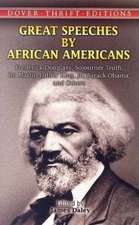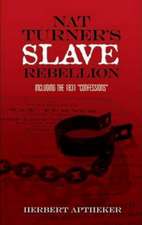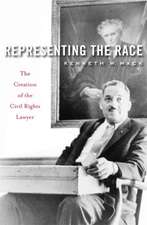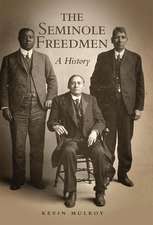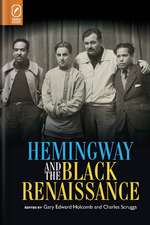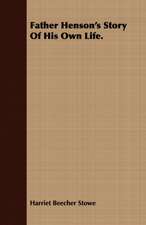A Key to Uncle Tom's Cabin
Autor Harriet Beecher Stoween Limba Engleză Paperback – 19 sep 2017
Southern readers were further incensed by this follow-up volume, their wrath in no small part inflamed by a Yankee woman's presuming to tell men what to think. A critical aspect of Stowe's "Key" is her critique of the law's support of not only the institution of slavery but also the mistreatment of individual slaves. As in the original novel, her challenge extends beyond slavery to the law itself. American society's first widely read political novel, "Uncle Tom's Cabin" influenced the development of the nation's literature, particularly in terms of protest writing. This supplement to the novel offers valuable insights into a historical and literary landmark.
| Toate formatele și edițiile | Preț | Express |
|---|---|---|
| Paperback (6) | 97.94 lei 3-5 săpt. | |
| Dover Publications – 29 oct 2015 | 97.94 lei 3-5 săpt. | |
| Inkling Books – 3 ian 2005 | 148.83 lei 3-5 săpt. | |
| Mint Editions – mai 2021 | 158.42 lei 3-5 săpt. | |
| Pantianos Classics – 1853 | 136.64 lei 6-8 săpt. | +73.90 lei 7-13 zile |
| – | 152.24 lei 6-8 săpt. | |
| Echo Library – 19 sep 2017 | 257.29 lei 39-44 zile | |
| Hardback (1) | 212.24 lei 3-5 săpt. | |
| Mint Editions – 20 mai 2021 | 212.24 lei 3-5 săpt. |
Preț: 257.29 lei
Nou
Puncte Express: 386
Preț estimativ în valută:
49.23€ • 53.69$ • 41.51£
49.23€ • 53.69$ • 41.51£
Carte tipărită la comandă
Livrare economică 21-26 aprilie
Preluare comenzi: 021 569.72.76
Specificații
ISBN-13: 9781406885590
ISBN-10: 1406885592
Pagini: 620
Dimensiuni: 155 x 219 x 42 mm
Greutate: 0.9 kg
Editura: Echo Library
ISBN-10: 1406885592
Pagini: 620
Dimensiuni: 155 x 219 x 42 mm
Greutate: 0.9 kg
Editura: Echo Library
Notă biografică
Harriet Elisabeth Beecher Stowe (1811 - 1896) was an American abolitionist and author. She came from the Beecher family, a famous religious family and is best known for her novel Uncle Tom's Cabin (1852), which depicts the harsh conditions for enslaved African Americans. The book reached millions as a novel and play and became influential in the United States and Great Britain, energizing anti-slavery forces in the American North, while provoking widespread anger in the South. Stowe wrote 30 books, including novels, three travel memoirs and collections of articles and letters. She was influential for both her writings and her public stances on social issues of the day. In 1832, at the age of 21, Harriet Beecher moved to Cincinnati. There, she also joined the Semi-Colon Club, a literary salon and social club whose members included the Beecher sisters, Caroline Lee Hentz, Salmon P. Chase (future governor of the state and Secretary of Treasury under President Lincoln), Emily Blackwell and others. Cincinnati's trade and shipping business on the Ohio River was booming, drawing numerous migrants from different parts of the country, including many free blacks, as well as Irish immigrants who worked on the state's canals and railroads. Areas of the city had been wrecked in the Cincinnati riots of 1829, when ethnic Irish attacked blacks, trying to push competitors out of the city. Beecher met a number of African Americans who had suffered in those attacks and their experience contributed to her later writing about slavery.
It was in the literary club that she met Calvin Ellis Stowe, a widower who was a professor at the seminary. The two married on January 6, 1836. He was an ardent critic of slavery and the Stowes supported the Underground Railroad, temporarily housing several fugitive slaves in their home. Most slaves continued north to secure freedom in Canada. The Stowes had seven children together, including twin daughters. n 1850, Congress passed the Fugitive Slave Law, prohibiting assistance to fugitives and strengthening sanctions even in free states. At the time, Stowe had moved with her family to Brunswick, Maine, where her husband was now teaching at Bowdoin College.
Shortly after in June, 1851, when she was 40, the first installment of her Uncle Tom's Cabin was published in serial form in the newspaper The National Era. She originally used the subtitle "The Man That Was A Thing", but it was soon changed to "Life Among the Lowly". Installments were published weekly from June 5, 1851, to April 1, 1852. For the newspaper serialization of her novel, Stowe was paid $400. Uncle Tom's Cabin was published in book form on March 20, 1852, by John P. Jewett with an initial print run of 5,000 copies. In less than a year, the book sold an unprecedented 300,000 copies. By December, as sales began to wane, Jewett issued an inexpensive edition at 37¿ cents each to stimulate sales. According to Daniel R. Lincoln, the goal of the book was to educate northerners on the realistic horrors of the things that were happening in the south. The other purpose was to try to make people in the south feel more empathetic towards the people they were forcing into slavery.




